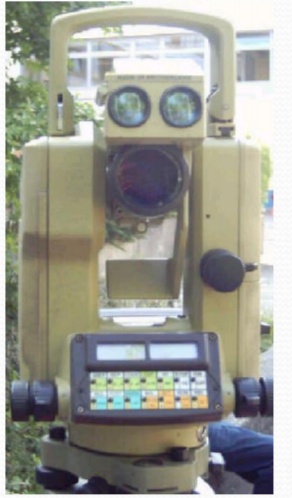Compass Traversing in the Field
Compass survey requires the following instruments:
1) Prismatic compass
2) Chain and arrows
3) Tape
4) Ranging rods and
5) Pegs.
The compass traversing of an area involves the following steps:
1) Reconnaissance of area
2) Determining the direction of lines
3) Measuring the traverse legs and offsets.
1. Reconnaissance of area:
The area is divided into triangles and of
polygons. Suitable stations are selected on the rough sketch and designated
as A, B, C etc.
2. Determining the directions of survey lines:
The compass is set at each successive stations i.e., A, B, C, D, E of the closed traverse ABCDEA
and the fore bearings and back bearings of lines are observed.
3. Measurement of traverse legs and offsets :
A compass is centered over a station A and after leveling the compass the fore bearing AB and
back bearing EA are taken by sighting the ranging rods at A and E. The line
AB is chained and the offsets to the detailed points are noted and entered
in the field notes. The operation is repeated at other stations B, C, D, and E
Forward and Backward Bearings:
In compass surveying, two bearings are observed for each line, one fromeach end of the line. The bearing of a line in the direction of the progress of
survey is called the forward bearing or fore bearing while the bearing measured
in the opposite direction is called as the backward bearing or back bearing.
The difference between the fore bearing and back bearing of a line is 180
.
Back bearing =fore bearing ± 180
.
Example:
The following are the observed fore bearings of lines of a traverse.
Find their back bearings:
a) AB 42 45’ b) BC 128 15’
c) CD 232 15’ d) DE 301 30’
Solution:
a) FB of AB = 42 45’
BB of AB = 42 45’+180 = 222 45’
b) FB of BC = 128 15’
BB of BC = 128 15’+1800 = 308 15’
c) FB of CD = 232 15’
BB of CD = 232 15’-180 = 52 15’
d) FB of DE = 301 30’
BB of DE = 301 30’-180 = 121 30’








0 Comments